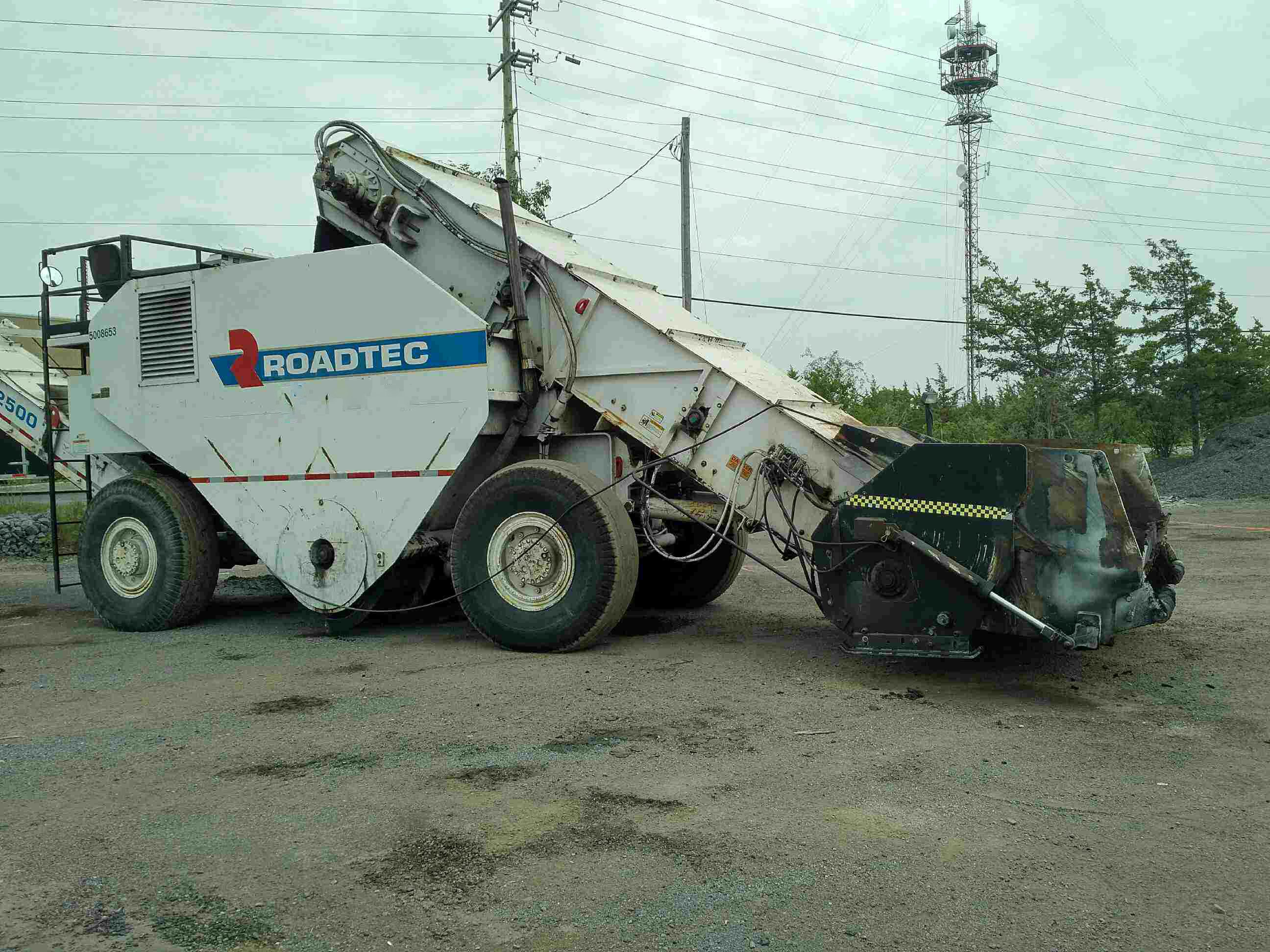An Ontario construction company specializing in highway asphalt paving chooses dry ice blasting over manual methods to quickly and efficiently clean transport vehicles.
The company remains busy with major construction projects throughout most of the year. With their machines in constant use, it is not possible to clean them until the off-season when work begins to slow.
Washing away the accumulated layers of asphalt from the Material Transfer Vehicle's (MTV) intricate parts required excessive time and manpower. The company needed a more efficient method for cleaning MTVs to keep the vehicles operating continuously.
The Problem
Cleaning the company's MTVs, including the hopper, auger and two large chains, required four workers manually scraping and picking the machine parts with chisels, water and chemicals. This process took over ten hours.
The cleaning chemicals contaminated the asphalt that is chipped away, preventing it from being dumped back into the mixer and recycled. The steel on steel chiseling and abrasive chemicals also risk damaging the links.
Sandblasting proved to be an equally ineffective solution, leaving grit in the chain links and rollers, further contaminating the leftover asphalt. This method also resulted in an additional expense to collect and dispose of the sand.
The company needed a way to:
-
Clean MTVs without taking them out of service
-
Reduce manpower and hours required to clean parts
-
Preserve leftover asphalt without contamination
-
Clean without damaging MTV components
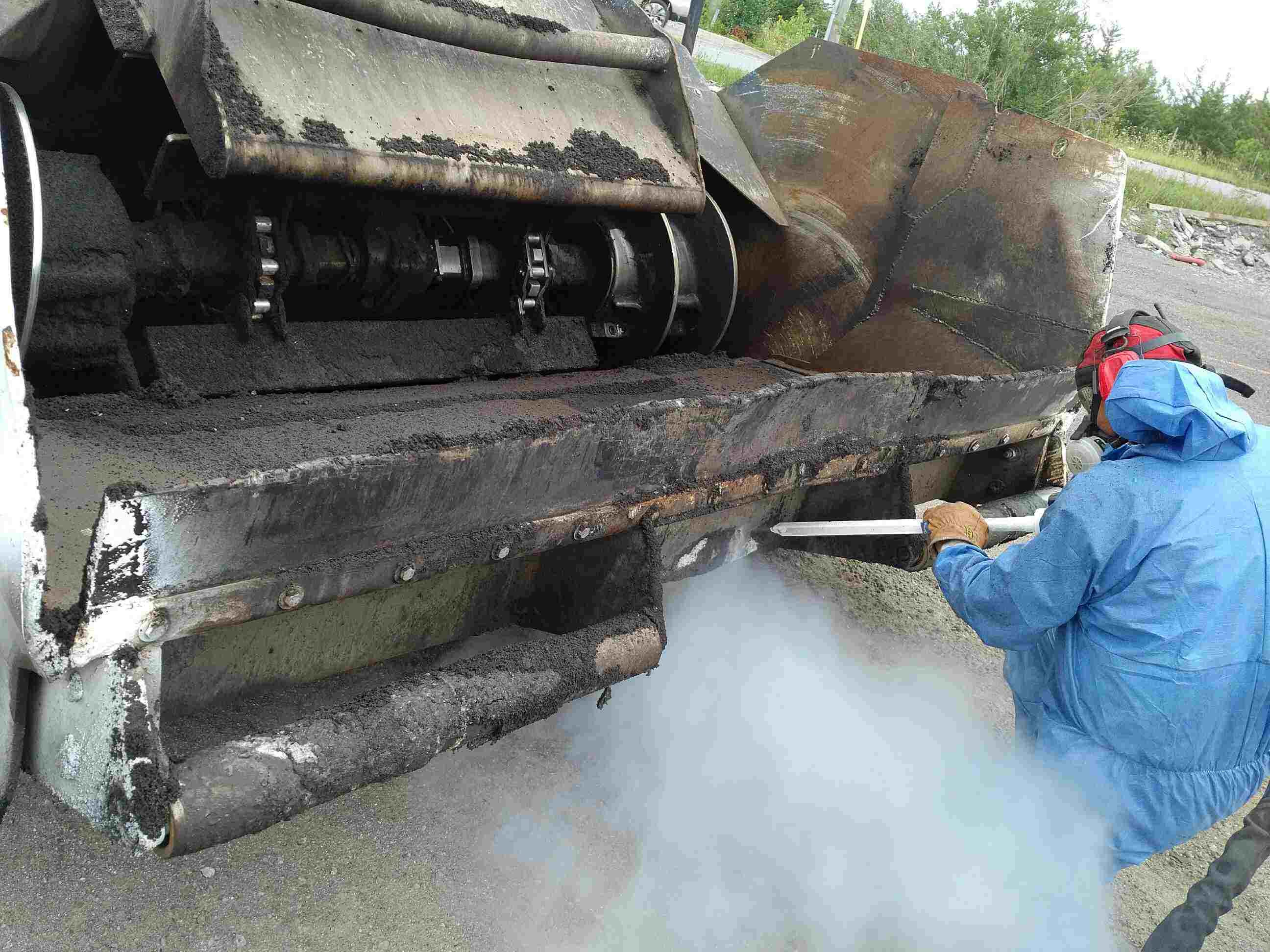
The Solution: Dry Ice Blasting
Dry ice blasting was a great option for this company because it cools the asphalt on contact, making it easier to remove and leaving the original substrate undamaged.
The dry ice blasting process uses non-abrasive media in the form of recycled CO2 pellets that won’t damage surfaces or equipment. The combination of dry ice cleaning’s kinetic energy and thermal effects break the connection between the dirt and surface, lifting away contaminants.
Learn about dry ice blasting for contractors >>
Unlike blasting with other media, dry ice cleaning:
-
Does not leave any secondary waste
-
Is safe and non-toxic
-
Does not create downstream contamination
The Results
1) Efficient cleaning
Using Cold Jet’s Aero 40FP with a high flow MERN nozzle, local contractor Go Green Dry Ice Blasting successfully removed all the asphalt buildup on the MTV's hopper, auger and chains.
“We were able to break down the asphalt totally. It didn’t matter how thick it was or where it was, we could break it down and take it off with the dry ice blasting. And we didn’t go overly excessive with the aggression or the air pressure.”
- Wes Donaldson, Go Green Dry Ice Blasting
2) Faster cleaning
Using 400 pounds of dry ice, Go Green was able to clean 12 square feet in less than one minute by blasting at 150 PSI with a 400 CFM compressor at five pounds a minute. Go Green cleaned the MTV in four hours with a one man team compared to the previous method, which took ten hours and a four man team.
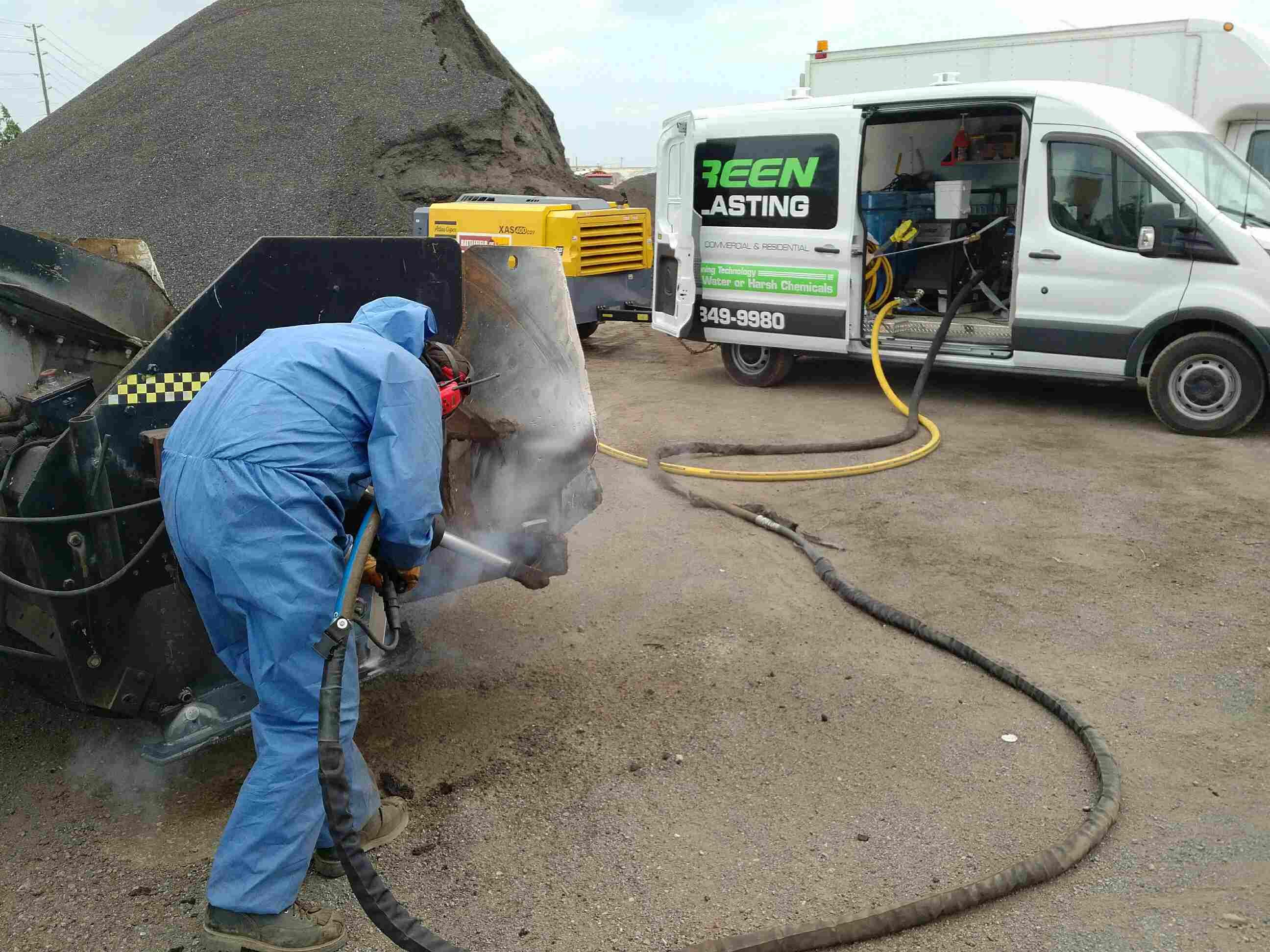
3) Non-abrasive
The paving company also liked the fact that dry ice blasting is non-abrasive and will not damage the expensive parts of the machinery.
"When you come in with something non-abrasive, they absolutely love it because they know that when you’re blasting a tough piece of debris that you’re not damaging their equipment, one of the links or a weld,” said Donaldson.
4) No secondary waste
Dry ice blasting also did not leave any secondary waste when the job was complete. Only the discarded asphalt remained. This eliminated the added time required to collect and dispose of additional waste and allowed the company to reuse the discarded asphalt.
Donaldson recommends dry ice blasting for cleaning asphalt off any machinery:
“Dry ice blasting is definitely the best option for cleaning asphalt off of equipment,” said Donaldson. “It’s faster, more efficient and is a safer alternative. It’s also non-abrasive and there’s no water or harsh chemicals mixing in with their asphalt.”
Before
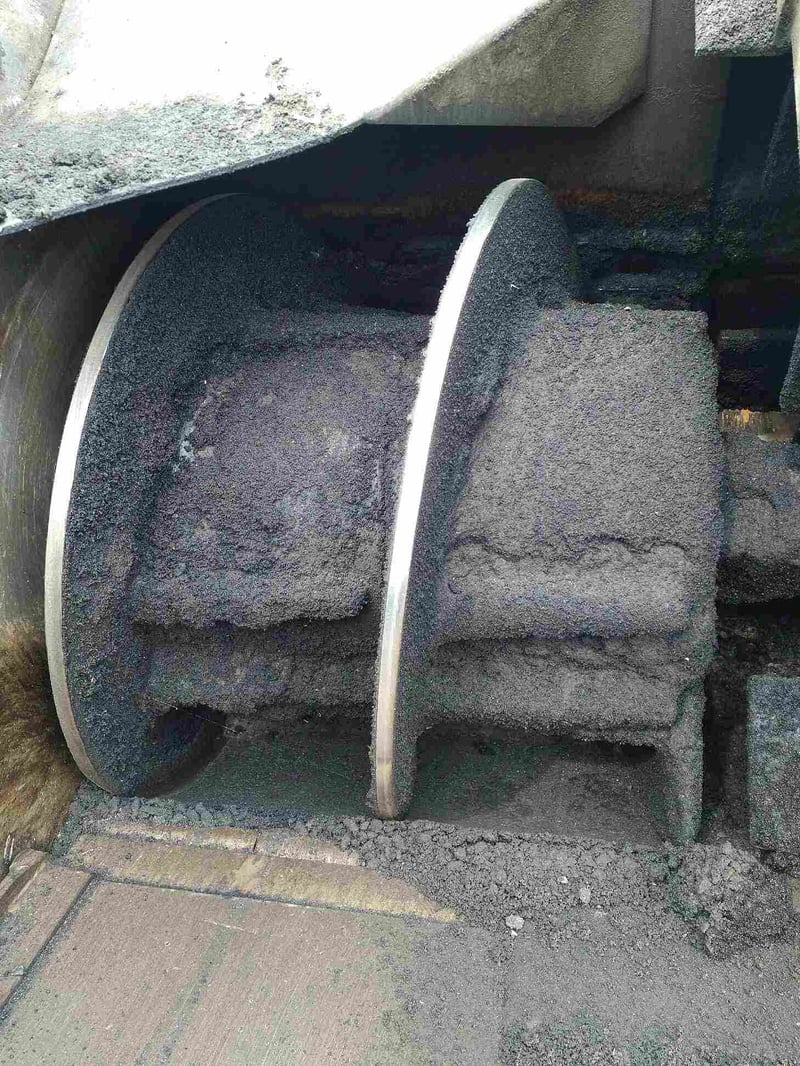
After
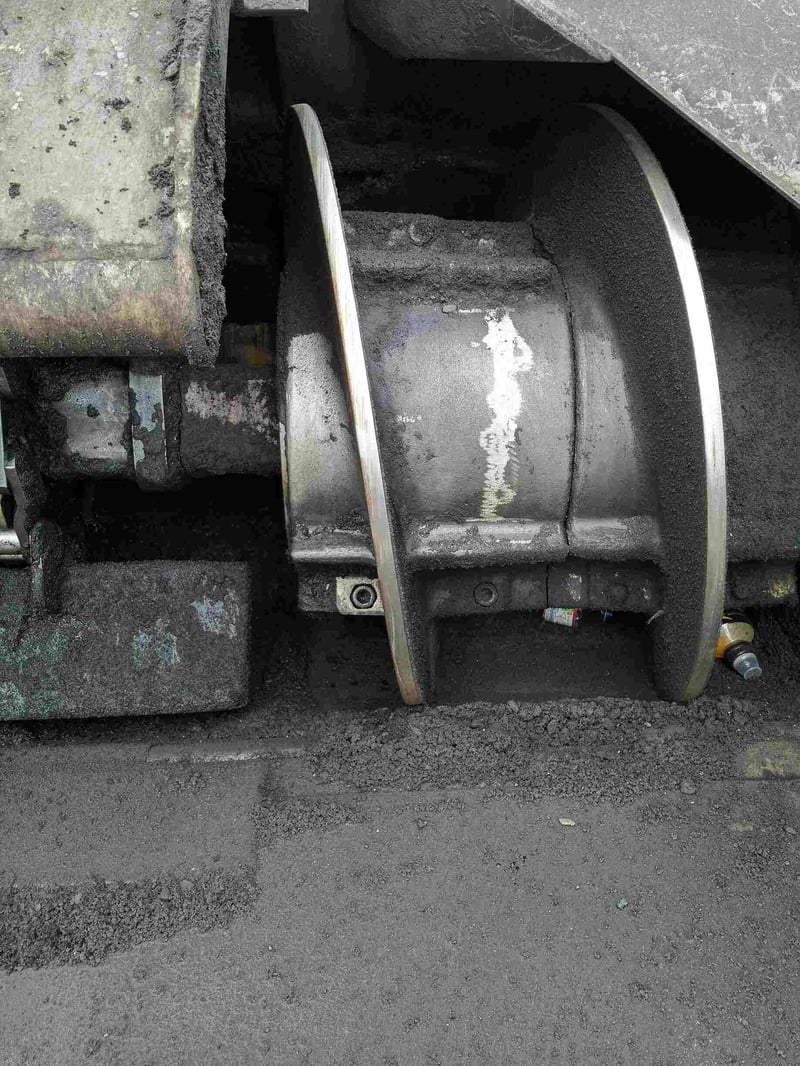
.png) English
English